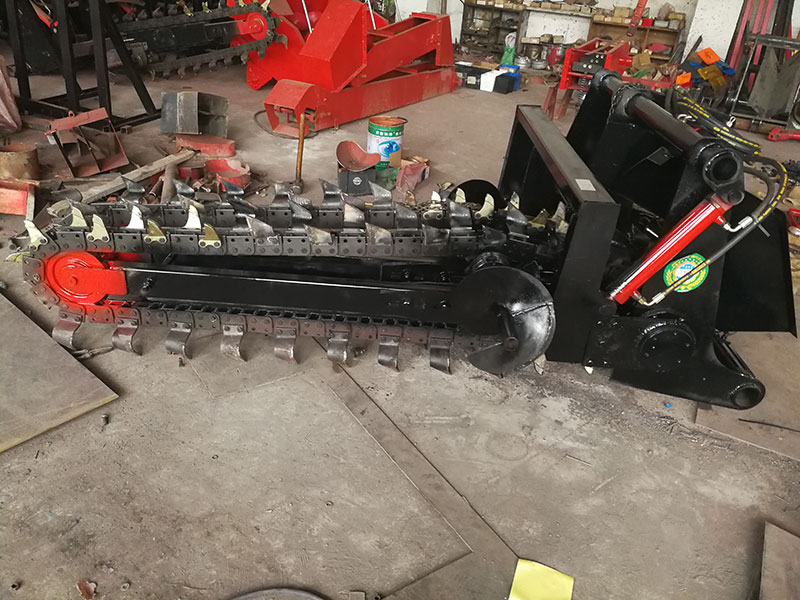A trencher is a new type of efficient and practical trenching device. After the diesel engine transmits the rotation to the clutch through the belt, it drives the travel gearbox, drive shaft, rear axle, etc. to realize the forward or backward linear motion of the chain trencher. It is used to lay farmland pipelines, urban and rural optical cables, etc.
There are basically three types of existing mechanized trenching technologies:
One is to dig with a small excavator
The second is to install and drag the chain trencher on a large tractor;
The third is a disc trencher
The chain trencher can achieve the same depth, uniform width and adjustable size of the trench, which greatly improves the quality and efficiency of excavation. The chain trencher uses a power ranging from 60 to 140 horsepower. In order to dig trenches of different widths, it can be converted into single and double chains. It can dig trenches with a width of 13-55 cm and a depth of up to 1.5 meters. The most important feature of this utility model is the fast digging speed, which can reach 500-700 meters/hour, low failure rate, and simple and practical.

Working principle
The chain trencher is mainly composed of a drive pulley, a drive shaft, a speed change gear box, a knife shaft and a frame. The trencher is mainly used in conjunction with a tractor, and is driven by the tractor to achieve trenching.
Scope of application
It has a wide range of applications. It can be used to dig narrow and deep underground trenches in construction projects to bury underground drainage pipes, or for railways, post and telecommunications, urban construction and other departments to bury cables and pipes, etc. It can also be used for trenching, fertilization, drainage and irrigation in orchards, vegetable gardens and other farmland environments.
Disc trencher is a farmland construction machine that uses a rotating milling disc as the main working part to dig drainage ditches. Main features: It can dig small-scale projects such as asphalt roadsides, village ditches, cables or ground.

The forward speed of the unit during operation is 50-200 meters/hour when trenching once, and 200-400 meters/hour when trenching multiple times. For a rotary trencher that trenches multiple times, the wheelbase or track center distance of the matching tractor must be properly matched with the trench width to operate smoothly.